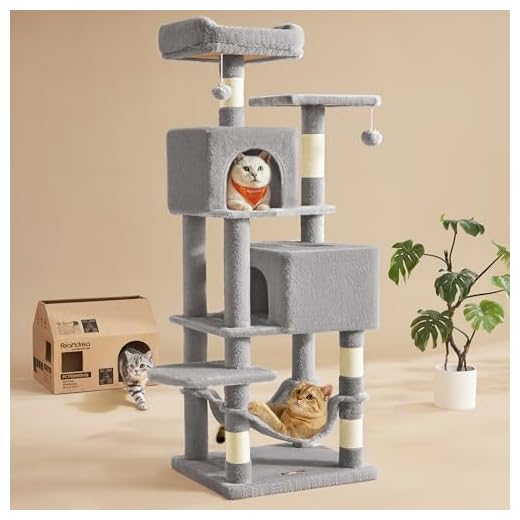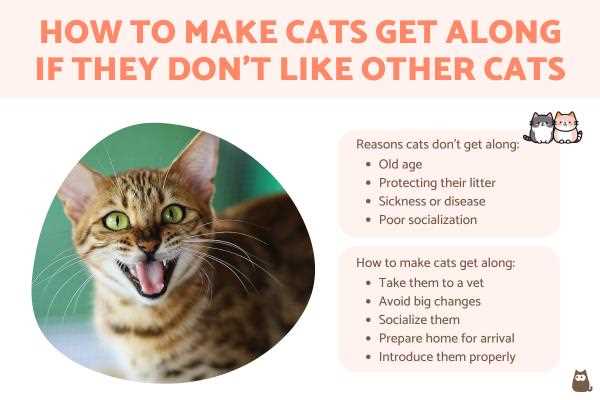



In my experience, achieving peace among housemates typically takes around 2 to 6 weeks, provided you follow some key steps. First, ensure each furry friend has their own space. Personal areas for eating, sleeping, and playing can significantly reduce tension.
Next, gradual introductions work wonders. Start by keeping us separated with a door or gate, allowing us to hear and smell each other without direct contact. After a few days, swap our toys or bedding so we can get used to each other’s scent. This helps create a sense of familiarity before any face-to-face encounters.
Additionally, positive reinforcement is crucial. Treats and praise during interactions can encourage friendly behavior. If a scuffle occurs, remain calm and avoid punishing us, as this can increase anxiety and prolong the adjustment period.
Finally, patience is key. Some of us may take longer to adapt than others, depending on our personalities. Monitoring our behavior and adjusting your approach as needed will greatly enhance the chances of a harmonious household.
Understanding Cat Behavior and Socialization

Recognizing body language is key. Pay attention to tail positions: a high tail indicates confidence, while a low or puffed tail signals fear or aggression. Ears that are turned sideways show irritation, while forward-facing ears indicate curiosity.
Establish separate spaces for each feline. This can minimize territorial disputes. Provide individual resting areas, litter boxes, and food stations. Gradual introductions can help: start with scent swapping by exchanging blankets or toys.
Use positive reinforcement. Offer treats and praise when they exhibit calm behavior around each other. This encourages them to associate one another with good experiences.
Monitor playtime closely. Play can build bonds, but it can also escalate into aggression. Use interactive toys to divert attention and prevent confrontations.
Consider age and temperament. A young, energetic kitty may overwhelm an older, more reserved companion. Their personalities play a significant role in how they interact.
Look for signs of stress. Hiding, excessive grooming, or changes in eating habits can indicate anxiety. If these behaviors persist, consult a veterinarian for advice on managing their environment or health.
Patience is crucial. Building a friendship takes time, and each pair will progress at their own pace. Regularly assess their interactions and adjust your approach as needed.
Signs That Your Felines Are Starting to Bond

When I see my housemate grooming himself, it’s a clear sign that we’re making progress. Mutual grooming, or allogrooming, indicates trust and affection. This behavior often starts with one cat licking the other, creating a sense of comfort and camaraderie.
Another positive indicator is the way we share our space. If I notice my companion lying close to me or even curling up together, it means we are becoming more relaxed in each other’s presence. This closeness is a strong signal of budding friendship.
Playtime is another essential aspect. If we engage in chase or pounce games, it shows we are comfortable enough to interact in a playful manner. Play behavior helps strengthen our bond and shows that we can enjoy each other’s company.
Vocalizations can also reveal our feelings. If I hear softer meows or chirps from my buddy, it suggests that he’s feeling more at ease around me. A relaxed tone is often paired with friendly body language, indicating a growing friendship.
Lastly, if I see him sharing resources, like food or toys, it’s a sign that he’s starting to trust me. Sharing is a big step in establishing a peaceful coexistence. While establishing these connections, don’t forget about health! If you have dogs at home, check out the best 3 month flea and tick treatment for dogs to keep everyone happy and healthy.
Creating a Safe Space for Both Felines

Establish separate areas for each furry companion. This allows them to have their own territory, reducing stress and potential conflicts. Each space should include essentials like food, water, litter box, and a cozy resting spot.
Vertical Spaces
Incorporate vertical elements such as cat trees or shelves. This gives us the chance to observe our surroundings from above, providing a sense of security. It also encourages exploration and play without direct interaction with the other.
Controlled Interactions
When introducing the two, use a baby gate or a screen door. This permits them to see and smell each other while maintaining a physical barrier. Gradually increase the time spent in each other’s presence as comfort grows.
Always monitor their behavior during interactions. Look for signs of relaxation, like slow blinking or grooming. Remember to provide positive reinforcement with treats or praise when they behave calmly around each other.
Additionally, maintaining a clean environment is key. Regularly remove any odors or traces left behind to prevent territorial disputes. Also, consider using flea protection for cats to ensure a comfortable living space free from pests.
Creating a secure and welcoming atmosphere for both of us makes the process smoother and more enjoyable.
When to Seek Professional Help for Cat Conflicts

If tensions between your furry companions escalate beyond typical disagreements, it’s time to consult a behaviorist. Signs indicating the need for expert intervention include prolonged aggression, persistent hissing, or severe fear responses. When one feline shows signs of extreme stress, such as hiding for days or refusing to eat, it’s crucial to reach out for guidance.
Look for behavioral patterns that don’t improve after several weeks of structured introductions. If your attempts at creating harmony through gradual exposure and positive reinforcement fail, a specialist can offer tailored strategies to address underlying issues.
Consulting an expert is also advisable if you notice physical signs of conflict, like injuries sustained during fights. Continuous conflicts can lead to chronic stress, impacting overall health. A trained individual can assess the situation, recommend behavior modification techniques, and help restore peace in your home.
Don’t hesitate to reach out if you feel overwhelmed. An experienced behaviorist can provide support, ensuring both of you can thrive in a harmonious environment.









